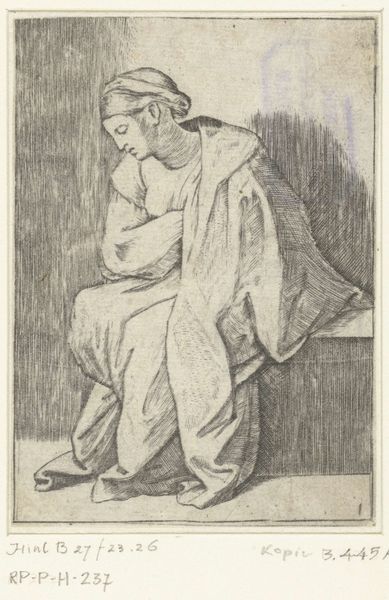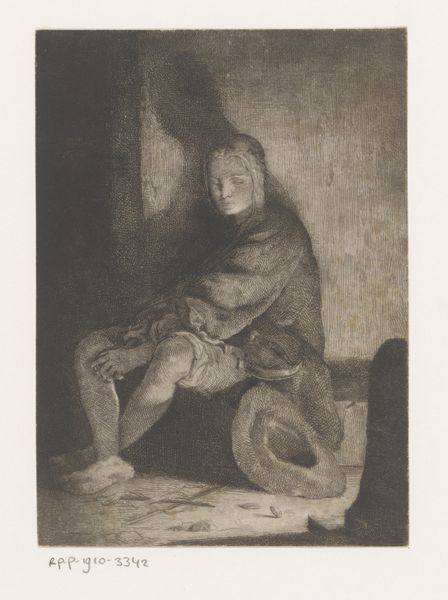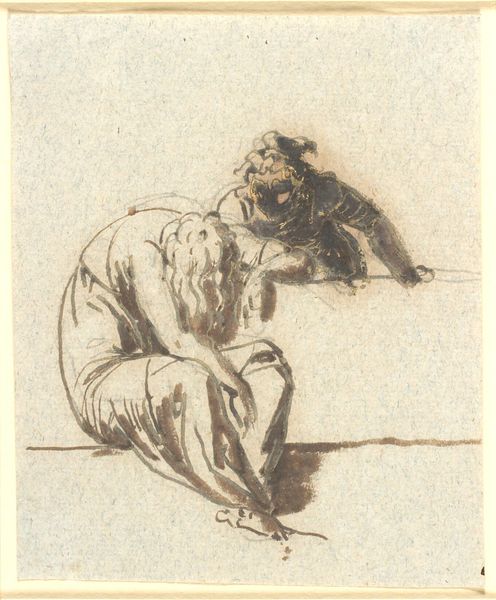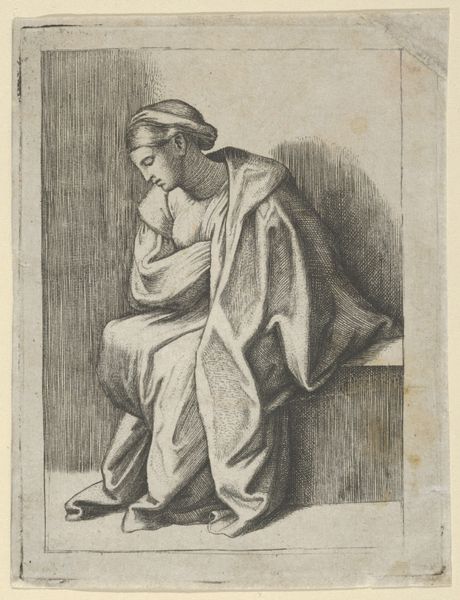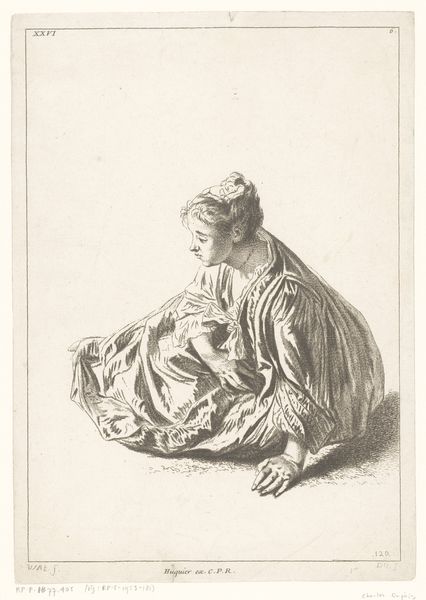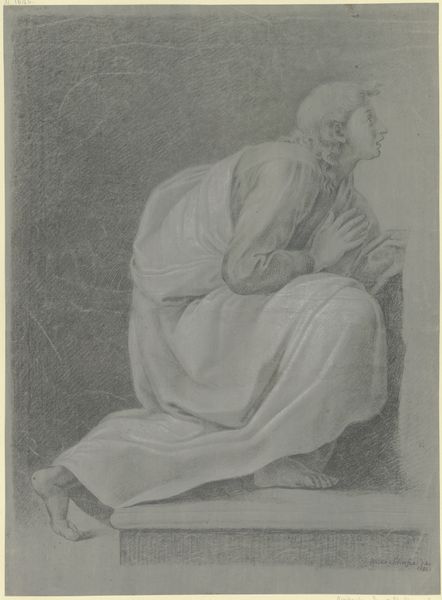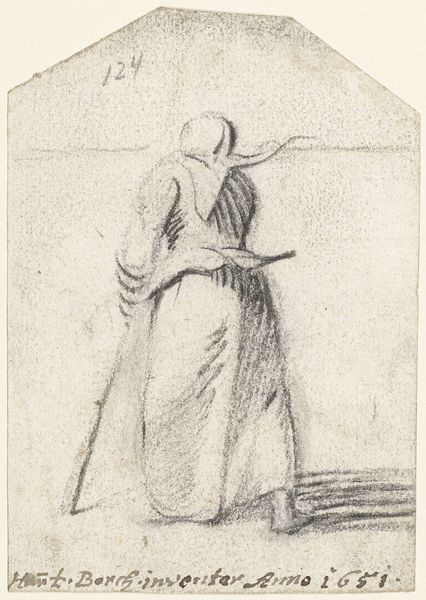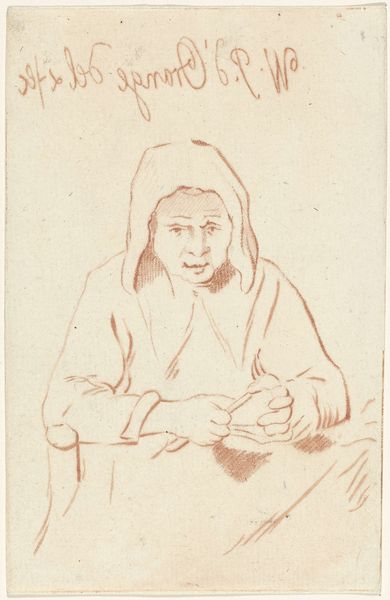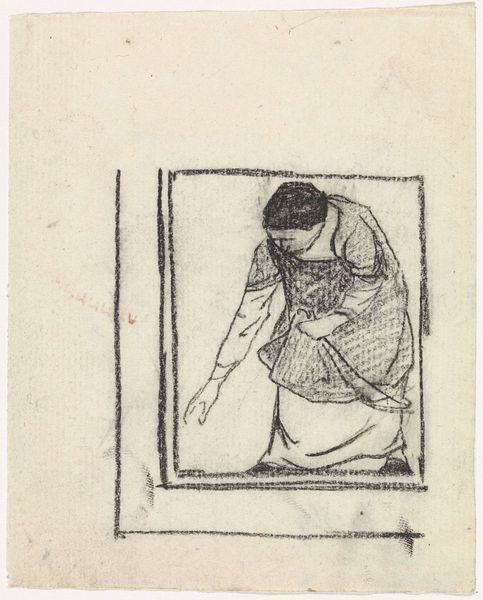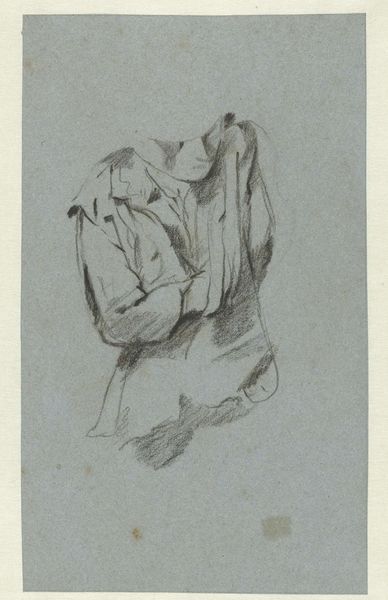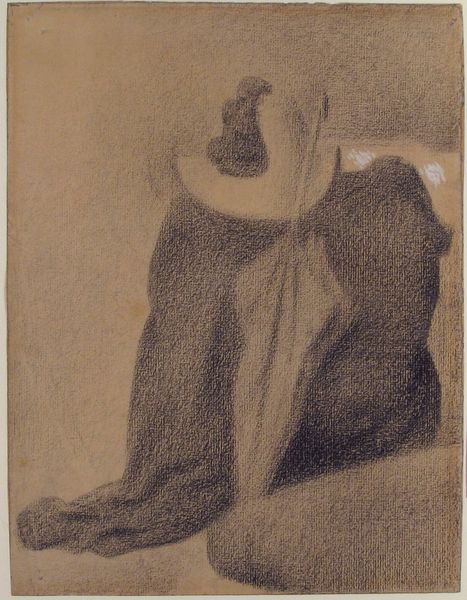
drawing, print, intaglio, engraving
#
portrait
#
drawing
# print
#
intaglio
#
line
#
portrait drawing
#
italian-renaissance
#
engraving
Dimensions: height 113 mm, width 76 mm
Copyright: Rijks Museum: Open Domain
Editor: This is "Zittende vrouw in overpeinzing," or "Seated Woman in Thought," by Marcantonio Raimondi, dating from 1510 to 1527. It's an engraving, and the incredible detail achieved through the intaglio process is quite captivating. I'm curious, what strikes you most about the choices made in creating this print? Curator: For me, the appeal of this piece hinges on its creation as a multiple, and what that represents culturally. Raimondi, an engraver and printmaker, operated during a crucial period when printmaking was becoming more accessible. What was formerly the purview of manuscript illumination could suddenly be disseminated more widely. He was a key figure in popularizing the work of artists like Raphael through prints. Editor: So you're saying that access to tools and techniques influenced how artworks circulated. Curator: Absolutely. Consider the economic implications. Producing engravings, rather than unique paintings, involved a different kind of workshop structure and skill set, creating new roles within artistic production. The use of metal plates, the labour involved in engraving--these choices shifted artistic agency and changed how art reached its audience. Editor: I never thought about it that way. The print almost feels like a mass-produced version of what would’ve been a painting accessible only to those who commissioned it, a new mode of image circulation in early modernity. Curator: Precisely! By examining the material basis of art, we unlock narratives far beyond just style and subject. Editor: That’s a totally fresh way of thinking about prints from this era. Thanks, I’ll definitely remember to consider the production process, going forward. Curator: My pleasure! Focusing on those processes opens so many avenues to discover hidden meanings and contextual nuance!
Comments
No comments
Be the first to comment and join the conversation on the ultimate creative platform.
